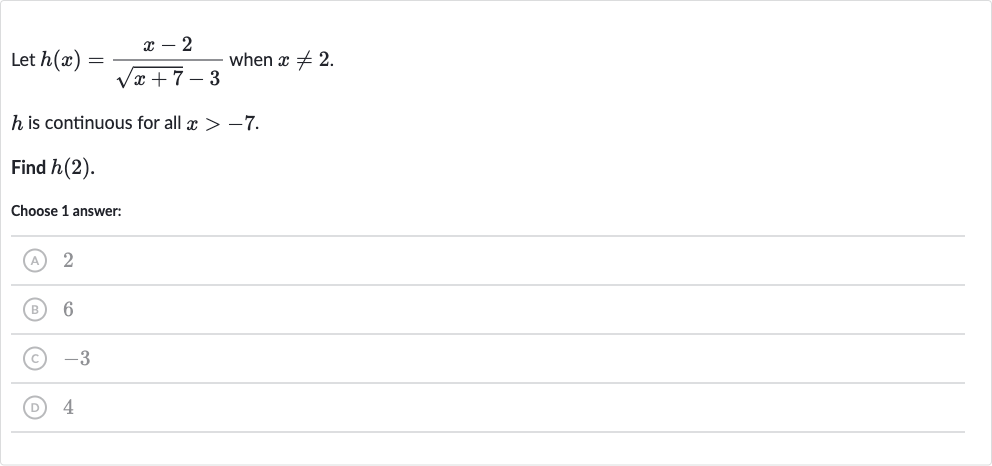Full solution
Q. Let when . is continuous for all .Find .Choose answer:(A) (B) (C) (D)
- Recognize the undefined point: Recognize that the function is not defined at because it would result in a division by zero. However, we are asked to find the limit as approaches , which will give us the continuous value of at .
- Rationalize the denominator: To find the limit of as approaches , we can use the conjugate of the denominator to rationalize it. Multiply the numerator and the denominator by the conjugate of the denominator, which is .
- Multiply numerator and denominator: Perform the multiplication from Step :
- Simplify the denominator: Simplify the denominator using the difference of squares formula:Denominator =
- Simplify the numerator: Simplify the numerator by distributing to :
- Cancel out common terms: Notice that the denominator cancels out with the term in the numerator, leaving us with:
- Substitute : Now, substitute into the simplified to find :

